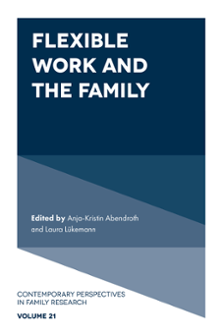
Index
ISBN: 978-1-80455-593-4, eISBN: 978-1-80455-592-7
ISSN: 1530-3535
Publication date: 19 April 2023
Citation
(2023), "Index", Abendroth, A.-K. and Lükemann, L. (Ed.) Flexible Work and the Family (Contemporary Perspectives in Family Research, Vol. 21), Emerald Publishing Limited, Leeds, pp. 229-234. https://doi.org/10.1108/S1530-353520230000021008
Publisher
:Emerald Publishing Limited
Copyright © 2023 Anja-Kristin Abendroth and Laura Lükemann
INDEX
Note: Page numbers followed by “n” indicate notes.
(see also Flexible work)
(see also Remote work)
- Prelims
- Section 1: Flexible Work and the Family During the COVID-19 Pandemic
- Chapter 1: When Home Becomes the Workplace: Work–Life Balance Experiences During the COVID-19 Pandemic
- Chapter 2: Working from Home During the COVID-19 Pandemic: Lessons Learned About the Relationship Between Flexible Work and Work–Family Conflict
- Chapter 3: Working Remotely During the COVID 19-Pandemic: Work and Non-Work Antecedents of Work–Life Balance Development
- Section 2: Gender, Parenthood, and Status-Specific Patterns of Flexible Work and the Family
- Chapter 4: Does Telework Mediate the Impact of Occupational Status on Work-to-Family Conflicts? An Investigation of Conditional Effects of Gender and the COVID-19 Pandemic
- Chapter 5: Does Working from Home Improve the Temporal Alignment of Work and Private Life? Differences Between Telework and Informal Overtime at Home by Gender and Family Responsibilities
- Section 3: Linked-Lives Perspective on Flexible Work and the Family
- Chapter 6: Individual and Cross-Partner Transitions to Flexitime and Teleworking and Cognitive Subjective Well-Being
- Chapter 7: Workplace Flexibility, Work–Family Guilt, and Working Mothers’ Parenting Behavior
- Index